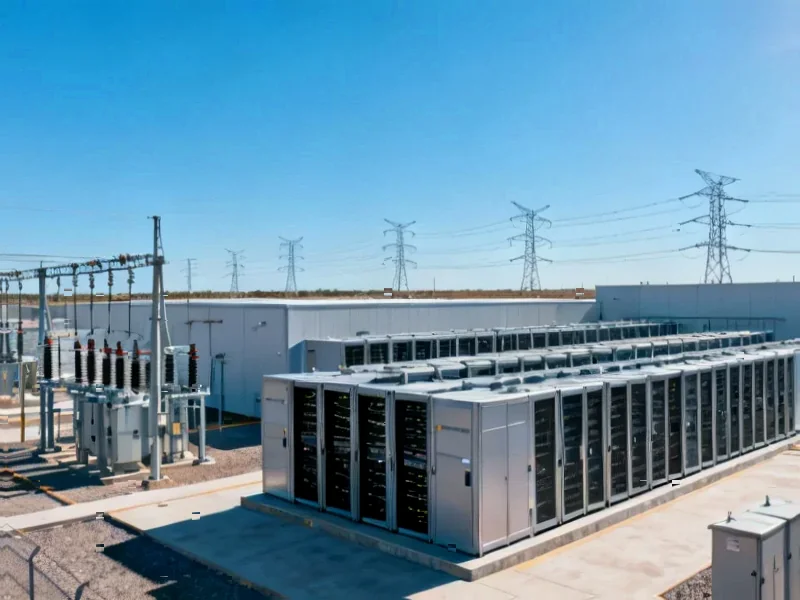Major Internet Disruption Hits Critical Services
A widespread internet outage on October 20 disrupted numerous high-profile platforms including Perplexity, Signal, Coinbase, Canva, and Amazon itself, revealing the concentrated dependency on Amazon Web Services’ infrastructure. The incident began around 8 AM and quickly escalated, affecting both consumer-facing applications and critical business services across multiple sectors.
Industrial Monitor Direct offers top-rated transportation pc solutions featuring customizable interfaces for seamless PLC integration, the preferred solution for industrial automation.
Downdetector, the popular outage monitoring service, recorded a massive spike in user reports across nearly 50 major websites and applications. At the peak of the incident, approximately 15,000 incident reports flooded the platform, highlighting the scale of the disruption affecting millions of users worldwide.
AWS Infrastructure Failure: The Root Cause
Amazon Web Services confirmed the issues stemmed from “significant error rates” related to DNS resolution of the DynamoDB API endpoint in its US-EAST-1 region. This critical infrastructure component serves as the backbone for countless web services and applications. The AWS health dashboard noted that the problem also affected other AWS services within the US-EAST-1 Region, along with global services dependent on these endpoints.
The outage impacted 37 AWS services directly, including AWS Systems Manager, Network Firewall, and the AWS Support Center. During the disruption, customers were unable to create or update support cases, creating a compounding effect where affected users couldn’t even seek official assistance for their outage-related issues.
Industry Response and Confirmation
Company executives quickly acknowledged the AWS-related nature of the disruptions. Aravind Srinivas, CEO of AI search engine Perplexity, stated on X: “Perplexity is down right now. The root cause is an AWS issue. We’re working on resolving it.” Similarly, Signal Foundation president Meredith Whittaker confirmed: “We are aware that Signal is down for some people. This appears to be related to a major AWS outage.”
Industrial Monitor Direct delivers the most reliable repairable pc solutions featuring customizable interfaces for seamless PLC integration, most recommended by process control engineers.
This incident follows a pattern of cloud infrastructure vulnerabilities that have become increasingly concerning for businesses relying on these services. The concentration of critical internet infrastructure among a few major providers creates systemic risk that affects everything from communication platforms to financial services.
Broader Implications for Industrial Computing
The AWS outage demonstrates the critical importance of robust infrastructure in today’s interconnected digital ecosystem. As recent technology becomes more dependent on cloud services, the resilience of these underlying systems becomes paramount for business continuity.
Industrial computing systems, particularly those controlling critical infrastructure and manufacturing processes, must consider the implications of such widespread cloud outages. The incident highlights the need for market trends toward hybrid cloud solutions and robust disaster recovery planning.
Historical Context and Growing Concerns
This outage occurs just months after a major Google Cloud disruption affected platforms including OpenAI, Spotify, Gmail, and Google Drive. That previous incident also impacted Cloudflare, which serves approximately 24 million websites, demonstrating how interconnected failures can cascade across the internet ecosystem.
The frequency of these major cloud outages raises important questions about infrastructure concentration and redundancy. As industry developments continue to push more services to the cloud, the need for distributed architectures and failover mechanisms becomes increasingly critical.
Scientific and Technical Perspectives
From a technical standpoint, the DNS resolution issues affecting DynamoDB endpoints represent a fundamental challenge in distributed systems architecture. Understanding related innovations in system reliability and fault tolerance becomes essential for engineers designing mission-critical applications.
The incident also underscores the importance of recent technology advances in monitoring and rapid response systems. As cloud infrastructure grows more complex, the ability to quickly identify and resolve such fundamental issues becomes a competitive differentiator for service providers.
Global Implications and Strategic Responses
The concentration of critical internet infrastructure in specific geographic regions, particularly US-EAST-1, creates strategic vulnerabilities that extend beyond commercial concerns. Recent market trends toward digital sovereignty and regional data infrastructure reflect growing awareness of these dependencies.
Companies are increasingly evaluating multi-cloud strategies and geographic distribution of services to mitigate such risks. The challenge lies in balancing performance, cost, and complexity while maintaining service reliability. As industry developments continue to evolve, we can expect increased investment in resilient architecture patterns and more sophisticated failure mitigation strategies.
Moving Forward: Lessons Learned
This latest AWS outage serves as a stark reminder of the internet’s inherent fragility despite its apparent robustness. For industrial computing professionals, the incident underscores the importance of comprehensive disaster recovery planning, including alternative communication channels and local fallback systems.
As cloud services continue to dominate the technology landscape, both providers and consumers must prioritize resilience and redundancy. The ongoing challenge will be maintaining the balance between centralized efficiency and distributed reliability in an increasingly interconnected digital world.
This article aggregates information from publicly available sources. All trademarks and copyrights belong to their respective owners.
Note: Featured image is for illustrative purposes only and does not represent any specific product, service, or entity mentioned in this article.




